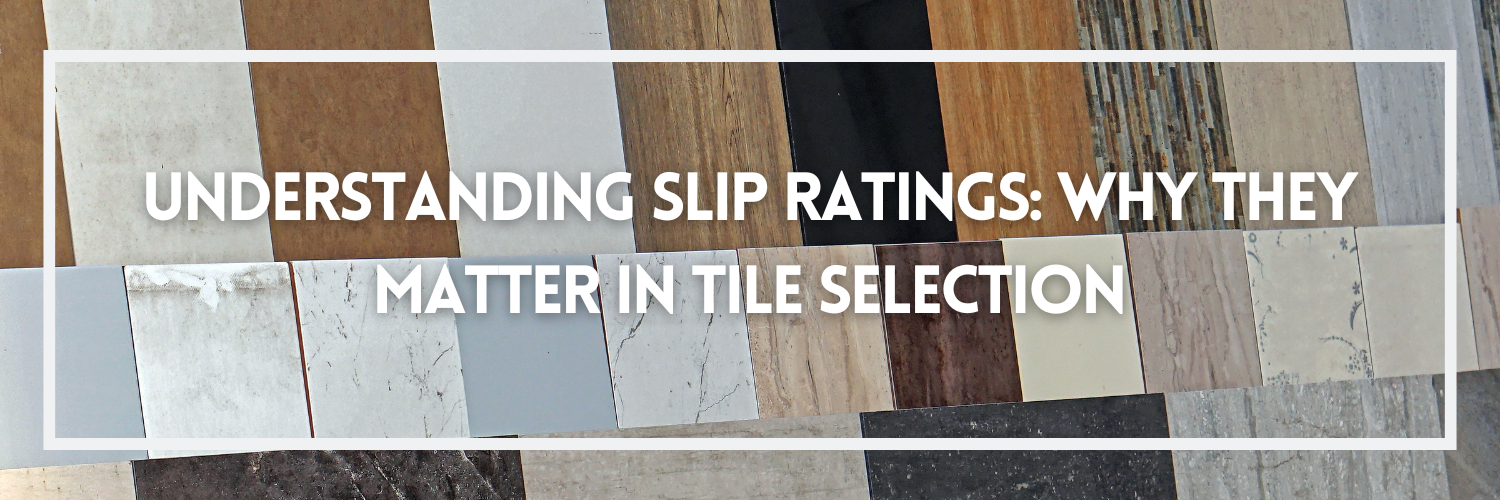When choosing tiles for your home or business, aesthetics and durability are often the first considerations. However, another critical factor that should never be overlooked is safety, particularly the slip resistance of the tiles. Slip ratings, also known as anti-slip ratings, provide a standardised measure of how slippery a tile is under various conditions, helping you select the safest option for your needs. In this blog post, we’ll explore what slip ratings are, how they are measured, and why they are so important.
What Are Slip Ratings?
Slip ratings are a measure of a tile's ability to prevent slips and falls, particularly in environments where moisture is present. These ratings are crucial in ensuring that spaces like bathrooms, kitchens, and outdoor areas are safe for everyone who uses them. The main purpose of these ratings is to reduce the risk of accidents caused by slippery surfaces, making them an essential consideration for both residential and commercial spaces.
How Are Slip Ratings Measured?
Slip ratings are determined through tests that simulate real-world conditions, providing a clear understanding of how a tile will perform when exposed to potential slip hazards. The two most common testing methods are:
-
Pendulum Test (PTV - Pendulum Test Value): The Pendulum Test assesses the friction of a tile surface by swinging a weighted rubber shoe over it. The resulting Pendulum Test Value (PTV) indicates the level of grip the tile provides. The PTV is classified into three main categories:
- PTV 0-24: High slip potential, not recommended for areas that get wet.
- PTV 25-35: Moderate slip potential, may be suitable in some conditions.
- PTV 36+: Low slip potential, ideal for areas that are frequently wet.
Tiles with a higher PTV offer better slip resistance, making them more suitable for areas with moisture or high foot traffic.
-
Ramp Test (R-Rating): The Ramp Test evaluates slip resistance by determining the angle at which slipping begins on an inclined tile surface. The R-Rating ranges from R9 to R13, with higher numbers indicating greater slip resistance:
- R9: Low slip resistance, suitable for dry indoor areas.
- R10: Moderate slip resistance, suitable for residential kitchens and bathrooms.
- R11: High slip resistance, suitable for wet areas, including commercial kitchens.
- R12-R13: Very high slip resistance, ideal for areas with heavy moisture, like pool surrounds.
Why Slip Ratings Are Important
Slip ratings are vital for ensuring the safety of people walking on tiled surfaces, whether in a home, business, or public space. The appropriate slip rating can prevent accidents, reduce the risk of injuries, and help avoid potential legal issues in commercial settings.
-
In Homes: Choosing the right slip rating is particularly important in spaces where there is a high risk of slipping, such as bathrooms, kitchens, and entryways. This is especially crucial if children, elderly people, or individuals with mobility challenges are present.
-
In Commercial Spaces: For businesses, ensuring flooring meets safety standards is not only a regulatory requirement but also a responsibility to protect customers and staff. High-traffic areas like restaurants, hotels, and retail stores should use tiles with high slip resistance to minimise the risk of accidents.
By understanding slip ratings and selecting the appropriate tiles, you can create spaces that are not only stylish and durable but also safe for everyone who uses them. In the next blog post, we’ll delve deeper into how to choose the right slip rating for specific areas in your home or business.

